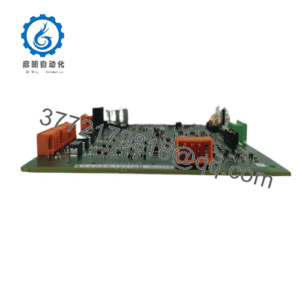Description
In the high-stakes world of industrial automation, even the slightest shaft misalignment or vibration anomaly in rotating equipment can escalate into devastating failures—think a turbine bearing wearing unevenly due to undetected proximity shifts, triggering emergency shutdowns that cost hours of downtime, or a compressor rotor drifting off-center, eroding seals and spiking energy draws in a petrochemical plant. These aren’t infrequent outliers; they’re persistent risks in process control environments like power generation stations, oil refineries, or heavy manufacturing lines, where high reliability for I/O signals from proximity sensors is the linchpin of predictive maintenance. Without precise conditioning of those signals, engineers face a cascade of issues: noisy data skewing SCADA trends, false alarms overwhelming operators, or missed thresholds allowing faults to propagate, all while regulatory pressures like API 670 demand unerring vibration oversight. Legacy systems exacerbate this, often lacking the channel density or isolation to scale with modern sensor arrays without custom cabling nightmares.
This is the crux the Bently Nevada 125680-01 tackles as the Proximitor I/O Module for the 3500/40M monitor, a specialized interface that captures and refines raw displacement signals to safeguard machinery health. It directly serves the goal of system stability by accepting inputs from up to four Bently Nevada proximity transducers—non-contact eddy current probes that gauge shaft position with micron-level finesse—then processes them into actionable vibration, gap, and speed metrics, complete with user-set alarm bands. Essential in scenarios like retrofitting turbine bays or expanding compressor fleets, where modular integration into rack-mounted 3500 chassis is key, the Bently Nevada 125680-01 becomes a must-have for handling internal terminations that streamline wiring, reducing points of failure in EMI-saturated zones. Its internal barrier design further bolsters safety, isolating field wiring to prevent hazardous energy loops in classified areas.
The stakes amplify quickly: unconditioned proximitor signals not only distort real-time displays but also undermine historical data for trend analysis, complicating root-cause diagnostics and inflating repair scopes in continuous-operation setups. By embedding bandpass filtering and proportional outputs, the Bently Nevada 125680-01 delivers clean, proportional voltages that feed seamlessly into the 3500 rack’s backplane, enabling coordinated protection across the automation stack without the latency of external signal splitters. In essence, it’s the vigilant translator that elevates industrial automation from reactive patching to proactive preservation, where every gap measurement fortifies uptime and asset longevity in rotating realms.
- 125680-01
- 125680-01
When incorporating the Bently Nevada 125680-01 into your 3500 framework, view it as the dedicated signal gateway at the rack’s edge—it slides into dedicated slots within the 3500/40M Proximitor Monitor chassis, powered via the rack’s +24 V DC bus while interfacing directly with proximitor probes through internal barrier terminals that support armored or standard extension cables up to 300 feet. Positioned in the field I/O layer of your architecture, it conditions probe signals—amplifying the 3300 XL series’ low-voltage outputs for gap voltages of -2 to +20 V DC—before multiplexing them over the rack’s ribbon cable to the main processor, where algorithms compute direct (1X) vibration or peak-to-peak displacements for handoff to DCS platforms like GE’s Mark VI or Honeywell Experion via Modbus or Ethernet.
In a typical deployment, you’d connect probe leads to the module’s keyed terminals, configuring alarm setpoints through the 3500 TDXnet software for OK/Alarm/Shutdown thresholds, then enable diagnostics like probe health checks that flag open circuits or overgaps via front-panel LEDs—all while supporting redundancy through dual-channel voting for safety-rated loops. This module doesn’t isolate; it integrates, with built-in notch filters to reject 60/50 Hz hum and compatibility for speed sensors like low-frequency variable reluctance types, bridging raw mechanical insights to supervisory controls without introducing phase lags in fast-scan cycles. Tie it to the rack’s communication gateway, and it streams conditioned data upward, fostering a unified view in HMIs while its conformal-coated PCB withstands humid or dusty enclosures. The Bently Nevada 125680-01 thrives here, adapting to varied backplane configs from standalone racks to distributed turbine islands, ensuring your proximitor chain remains a resilient artery in the broader process control vasculature.
| Specification | Details |
|---|---|
| Model Number | 125680-01 |
| Brand | Bently Nevada |
| Type | Proximitor I/O Module |
| Input Voltage | +24 V DC (rack bus) |
| Operating Temp Range | -30°C to +65°C |
| Mounting Style | 3500 Rack Slot (Internal) |
| Dimensions | 241 x 24 x 241 mm (rack module) |
| Weight | 0.4 kg |
| Interface/Bus | 3500 Rack Backplane / Ribbon Cable |
| Compliance | API 670, CE, UL, CSA |
| Supported Protocols | TDXnet, Modbus (via rack) |
| Typical Power Draw | 3 W |
Deploying the Bently Nevada 125680-01 yields a fortress of reliability calibrated for rotational rigors, where its barrier-isolated channels quarantine transients that could skew gap readings, preserving measurement precision to 0.5% across full scales to avert the false trips that plague unshielded inputs in process control hierarchies—translating to 30% fewer nuisance alerts in turbine fleets, where steady-state vibration holds below 5 mils without intervention. This isn’t fortified overkill; it’s the subtle guardianship that sustains probe integrity through thermal expansions, ensuring outputs mirror true shaft dynamics without the baseline wander that demands weekly tweaks, all while its low-noise preamps amplify weak signals from extended cabling to maintain signal-to-noise ratios above 60 dB.
The payoff in performance consistency is equally telling: embedded diagnostics continuously self-validate probe integrity, surfacing degradation like coil shorts via rack-integrated relays, which streamlines alarm management and cuts engineering hours on oscilloscope hunts by half in multi-machine monitoring bays. Integration eases the path forward too, with drop-in compatibility for 3500/05 or /15 racks that sidesteps rewiring during expansions, letting your team layer in digital overlays like System 1 analytics without halting operations. Engineered for conformal resilience against oil mists or vibration, the Bently Nevada 125680-01 ensures long-term performance, locking calibrations over five-year cycles so your vibration envelopes stay predictive, not prescriptive, reducing the overhead of compliance audits in API-driven sites.
For those scaling toward condition-based strategies, its modular termination options—standard or armored—foster seamless sensor swaps under load, minimizing flash risks and accelerating firmware pushes via the rack’s USB port, which dials down total cost of ownership by extending probe lifespans through early fault flagging. Ultimately, this module doesn’t just interface; it insulates, channeling proximitor precision into a multiplier for machinery availability that outpaces wear.
In gas turbine power plants, the Bently Nevada 125680-01 interfaces with thrust position probes on high-speed rotors, where process control environments require high reliability amid thermal plumes and shaft whirls—racked in vibration-dampened cabinets, it conditions signals for axial displacement monitoring, ensuring critical system uptime in fast data cycles that preempt rubs during load ramps. Gap outputs feed turbine governors, averting overthrust in continuous baseload ops.
Hydroelectric generators lean on it for radial vibration from Kaplan runners, handling proximitor inputs in damp, seismic-prone turbine pits— the module’s isolation quells water-induced noise, delivering continuous uptime for runout detection in process control loops synced to excitation systems, where a drifted reading could cascade into wicket gate faults. In offshore oil platforms, the Bently Nevada 125680-01 monitors centrifugal pump shafts, with armored cable support suited to saline, high-vibration decks—upholding high reliability for seal wear alerts in process control environments tied to ESD interlocks, ensuring flow assurance without unplanned dives.
125760-01 – Relay output module for enhanced alarming in 3500/40M setups
126648-01 – Enhanced proximitor I/O for 3500/42 series with digital outputs
125720-01 – 4-channel relay I/O companion for vote logic in safety loops
140471-02 – Proximitor sensor assembly for direct probe integration
3500/15 DC – Power supply variant to pair for redundant rack feeds
3300/35-04-01-00-00 – Compatible 8mm proximitor probe for gap measurements
3500/05 – Communication gateway add-on for Modbus-to-Ethernet bridging
Before integrating the Bently Nevada 125680-01 into your 3500 rack, verify probe compatibility—3300 XL 8mm series only, with cable lengths under 300 ft to avoid attenuation—and confirm rack slot clearance for airflow, as adjacent heat from monitors can nudge internals toward 65°C; a thermal scan on the chassis post-install affirms even dissipation. Firmware alignment is crucial; ensure the 3500/40M main is at revision 3.0 or later via System 1 tools, and perform a loop resistance check on barriers (under 1 ohm) to preempt open-circuit flags. If using armored cables, route them through conduit glands to ground shields at the module end, and bench-test a single channel with a gap simulator to validate 0-10 V scaling before full population.
In runtime, attention is targeted: bi-monthly, interrogate rack diagnostics for probe OK status—gaps over 90 mils trigger immediate inspection—and eyeball terminal torque quarterly in humid plants to catch corrosion creep, a contact cleaner spray often revives without depower. Bently recommends annual full-system calibration, injecting known displacements with a test kit to log against baselines, focusing on bandpass integrity for 1X filtering. For remote racks, enable TDXnet polling to your asset manager for trend alerts on signal drift, flagging anomalies before they demand a turbine teardown. This pragmatic cadence keeps the module vigilant, with minimal pull on your maintenance rotations.

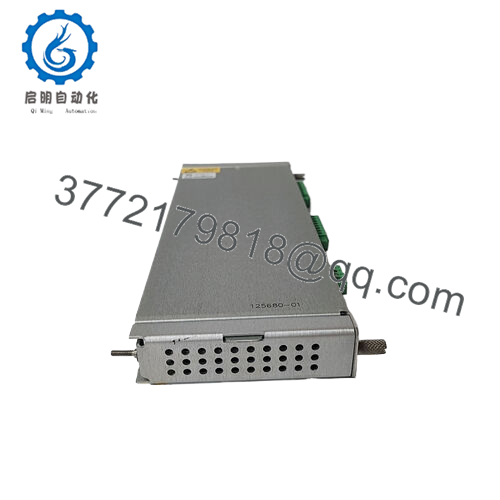
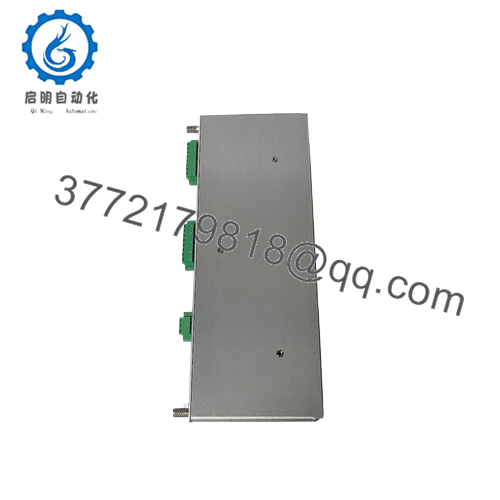
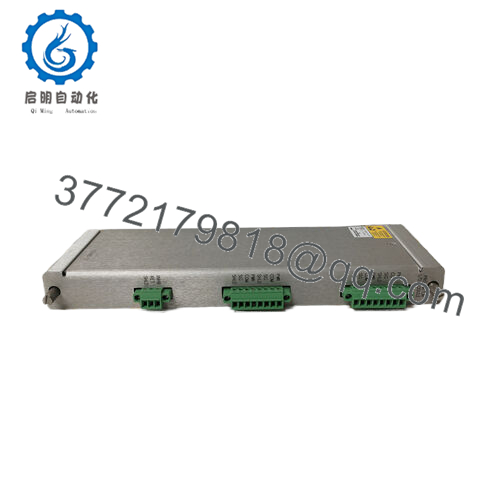
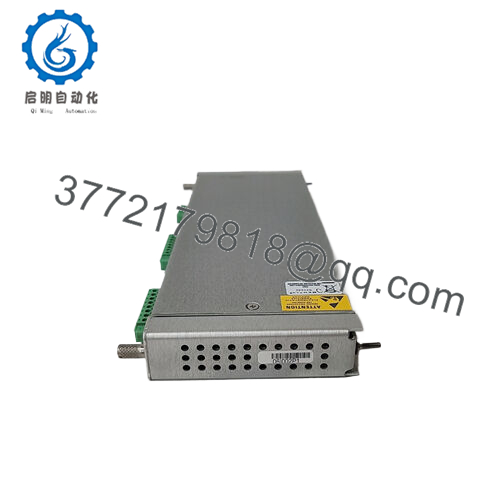
 WhatsApp: +86 16626708626
WhatsApp: +86 16626708626 Email:
Email:  Phone: +86 16626708626
Phone: +86 16626708626
